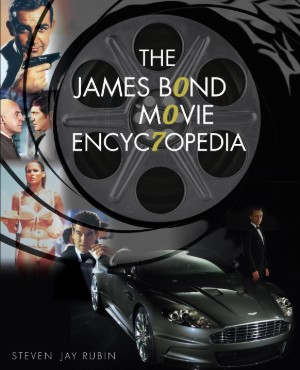(March 11, 1925–August 14, 2002): British editor turned film director who cut the first four James Bond films before first assuming the mantle of director for On Her Majesty’s Secret Service. Hunt contributed greatly to the visual style and pacing of the early Bond films.
Starting with Dr. No, Hunt and director Terence Young used a film editing technique comparable to television commercial cutting at the time, which produced a very lean visual style. For instance, if an actor walked out a doorway and headed for his car, Hunt would get him there as quickly as possible—“cutting to the chase,” as it were. Said Young, “We used to cut in the middle of pans. There was no dissolving. You went straight into flash cuts. There were a lot of sound cuts and an enormous number of tracks and pans so that one always got the impression that something was moving on screen.”[1]
The idea of keeping Dr. No moving at all times was a key to its success. Everyone, including producers Albert R. Broccoli and Harry Saltzman, was concerned that American audiences would not accept a Scottish actor as a leading man and hero. Consequently, much of Dr. No’s screen time is devoted to movement, action, and fights, and Sean Connery has a minimum of dialogue in the first film. And, as Young pointed out, the zippy pace helped audiences breeze through any questionable logic in the story: “It was only on the way home that the husband turned to the wife and said, ‘It was rather nonsense, wasn’t it!’ But people would qualify their criticism with ‘Look, you enjoyed it for a couple of hours, what else do you want?”[2]
Peter Hunt’s pacing, combined with Terence Young’s precise direction, Richard Maibaum’s script, and John Barry’s music, initiated a new style in filmmaking. Hunt’s editing technique owes a debt to his early schooling at the London College of Music, where he studied music theory and violin and developed an appreciation for musical timing.
Hunt was also responsible for suggesting Sean Connery as a possible James Bond in 1961. At that time, Hunt was editing the movie On the Fiddle, a British service comedy in the vein of an Abbott and Costello vehicle, with Alfie Lynch and Connery in the leads. One night, while having dinner at London’s Polish Club with the film’s producer Benjamin Fisz, Hunt bumped into producer Harry Saltzman, who was then conducting the 007 casting search. Hunt suggested Connery for the part, and Saltzman eventually looked at some footage. He came to the same conclusion that his partner Albert R. Broccoli would have in Los Angeles while screening Walt Disney’s Darby O’Gill and the Little People—that Sean Connery was their Bond.
By the release of Thunderball in 1965, Hunt had begun to tire of the editing chores on the Bond films and was eager to make his directing debut. He agreed to return as editor and second unit director on You Only Live Twice only if producers Broccoli and Saltzman would let him direct the next picture in the series. The producers kept their part of the bargain, and Hunt was signed to direct an adaptation of perhaps the best of Ian Fleming’s novels, On Her Majesty’s Secret Service.
Unfortunately, Sean Connery had left the series by then, so Hunt was forced to find his own Bond. Australian model George Lazenby won the role in 1968. Hunt’s own editorial style was carried on by new editor John Glen, who also served as the film’s second unit director.
Ironically, considering the tight pacing Hunt had brought to the series, his directorial debut was the longest film in the series, at 140 minutes, until it was eclipsed by Casino Royale’s 144 minutes in 2006. However, OHMSS is also one of the most interesting 007 films to delve into as a fan. Determined to make an impact in his directorial debut, Hunt studied the original novel and worked closely with screenwriter Maibaum to create what is probably, along with From Russia with Love, the most faithful dramatization of an Ian Fleming work—down to the naval cannon in the driveway of M’s home.
Pay particular attention to the opening teaser sequence, which serves to introduce George Lazenby as Bond. The action sequences are quick and boisterous, particularly a fight in the surf, and a quick battle outside Marc-Ange Draco’s office in Portugal.
A London native, Hunt made his motion picture debut as an uncredited associate editor on The Thief of Bagdad (1940), working with editor Charles Crichton. He rose to editor himself on director Burt Balaban’s science fiction thriller Stranger from Venus (1954), a.k.a. Immediate Disaster and The Venusian, and later worked as future Bond director Lewis Gilbert’s editor on Sink the Bismarck! (1960). Hunt’s directing credits include Gold (1974), with Bond veterans Roger Moore, Bernard Horsfall (On Her Majesty’s Secret Service), and Nadim Sawalha (The Spy Who Loved Me, The Living Daylights); Shout at the Devil (1976), again with Moore and Horsfall; Death Hunt (1981); Wild Geese II (1985), with Bond players Barbara Carrera and Edward Fox; and Hyper Sapien: People from Another Star (1986).
[1] Terence Young, interview by Steven Jay Rubin, London, June 25, 1977.
[2] Ibid.

